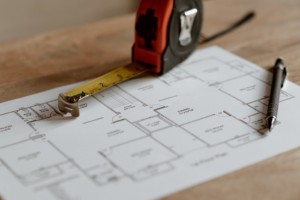
In the last thirty years or so, potential Feng Shui students have come across schools which identify themselves as “Traditional” or “Classical” versus some other schools, such as “western Feng Shui” or other clever descriptions. And some of these misnomers make it appear that if you are not studying the “modernized” versions of Feng Shui that somehow you will be lacking in the ability to discern and apply these ancient teachings in a modern context.
Nothing could be further from the truth, so long as the consultant has had ample training in the traditional methodology. And that is the ironic twist because many so-called modern schools generally do not provide their students with the deeper and more accurate ways to diagnose a building, house or natural landscape. In contrast, the traditional or classical schools are so complex, sophisticated and nuanced, that they really can make a convincing claim that Feng Shui is a natural science as much as a metaphysical practice. And yet it is this level of study which has been daunting enough to keep the majority of Feng Shui practitioners away from studying the Real McCoy. This is why the other camp has called itself “Chinese Feng Shui” because they want to be identified with the authentic origins of this practice.
And still, one has to scrutinize the training of any consultant, since some “Chinese” practitioners use the term just for marketing purposes when they are dispensing little more than a big bag of folk beliefs. Another term that was not used 30+ years ago (because it seemed too technical) is “Xuan Kong Fei Xing Flying Star” school, as this lets consumers know that the practitioner uses a compass and factors in the changing influences of time, so critical to a proper analysis.
This peculiar practice of homogenizing information exists in other esoteric arts as well, such as Yoga. For many years I practiced something called Kundalini Yoga, which is not an ancient art form, rather a style that was created by one man (which he trademarked) and brought to the United States in 1969. This style of yoga blends some of the traditional Hatha Yoga postures with the breathing techniques from Pranayama Yoga and also includes meditation focal points from Raja and Mantra Yoga. Fast forward 50 years later and we have people now blending yoga with other forms of exercise, martial arts and coming up with crafty names like “Power Yoga.”
It is true that in ancient times there was no such thing as a garage to park your car in. And it is true that a thousand years ago a Feng Shui master would not be advising an internet company or any technology business on how to best set up their offices. But the very heart of Yin-Yang theory is another manifestation of zeros and ones and the DNA of our being, so these classical principles are as applicable to any modern environment, anywhere, as they were hundreds or thousands of years ago. In fact, it is easier today to use those traditional methods in an even more exacting way, thanks to technology.
Over the years I have heard really pitiful excuses for a practitioner not using a compass or preferring a westernized adaptation of Feng Shui which can be learned in an afternoon, as if it were superior or more relevant to our current times. But when people choose to learn the classical material they always are in awe and they embrace it since it is so much more accurate. Classical Feng Shui practitioners almost never go back to the more simplified New Age methods as it wouldn’t be possible to do that with a clear conscience.
Author: Kartar Diamond
Company: Feng Shui Solutions ®
From the Feng Shui History and Culture Blog Series
